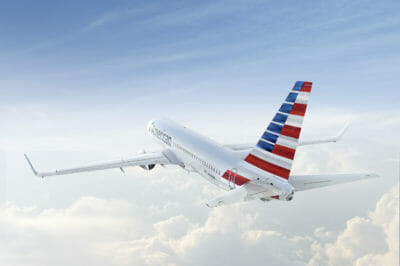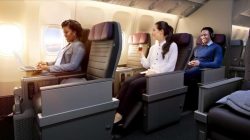The key to flying on the cheap is to be willing to put up with coach. While elite status will help you with domestic upgrades, and top-tier status will usually earn you some kind of voucher for international upgrades, mistake fares and fuel dumping will generally require that you spend your journey in cattle class.
Some airlines’ economy products are downright abysmal. While I am 6’1″, I’m usually comfortable enough in a normal economy class seat, even US Airways’ domestic fleet (and I hate flying US Airways). But on a recent trip to Madrid, I flew on one of their international A330 craft, and I swear that the seats were closer than the 31″ pitch advertised. That only got worse when the people in front of me reclined. Even when their seats were upright, my knees were touching the back the whole time. Too bad a Johnnie Walker from the Envoy lounge in PHL and one of my dad’s Ambiens did nothing to help me sleep. 🙁
On the same trip, I also flew the recently deceased Spanair on a domestic leg from Seville to Barcelona. It was great to have my Star Gold status recognized, getting me faster check-in and priority boarding. Interestingly enough, I was the only person with priority boarding on that flight yet sat back in row 23. All I have to say about that flight is that it smelled like the plane hadn’t been cleaned since it was built in the 70s. The yellow and brown color scheme certainly didn’t help, either.
While first class is one alternative, it’s horrendously expensive. It’s also becoming harder to find. In some cases business class is as the best that’s offered on that particular route or even on all routes for that particular airline. Frankly, business has gotten good enough since the introduction of lie-flat seats that most consumers see no compelling reason to pay even more money just to sit in first.
If an airline decides that business class is going to be its premium product, then the gulf between business and economy opens up a huge opportunity. Maybe you don’t need or can’t afford three meal options and a lie-flat seat for five times the price, but the alternative in row 36E is just to painful to imagine. Scott McCartney discussed the recent growth of “premium economy” in his Wall Street Journal column, The Middle Seat, last Thursday. In it he mentions that many international airlines are beginning to offer features once found in business class, including angled seats, better food, and some semblance of privacy from the person next to you.
Air New Zealand has a particularly impressive Premium Economy in a 2-2-2 configuration for about three times the cost (~$2,400 vs. $800 for regular economy). Still, that’s a better deal than business class, which is generally $5,000 and up for a roundtrip ticket. Air New Zealand offers another alternative, the Skycouch, in the first few rows of its regular economy cabin. If you are willing to buy all three seats, the footrest will flip up to create a small bed. It’s almost the same price as buying a Premium Economy seat if you’re flying alone, but if you’re cuddling with a spouse or children and buying two or three seats anyway, it’s a reasonably cheap alternative.
Other airlines, like Air France with it “Premium Voyageur” class, don’t give you quite as much as space and amenities as Air New Zealand’s Premium Economy. Seating is in a 2-4-2 configuration. It also costs less. Scott quotes a price of $1,500-$1,600 round trip between New York and Paris.
Unfortunately, U.S. carriers are only beginning to catch up even as they make significant improvements to their business class cabins. (And those business class improvements still aren’t quite up to par with the likes of Swiss and Air New Zealand.) United has for several years offered Economy Plus on all but its regional aircraft. This isn’t much different from regular economy, but it provides as much as five extra inches of legroom for only an extra $100 or more on long haul flights and much less on domestic trips. The free access I get to Economy Plus as a United elite is one of my favorite perks. Delta only recently began offering a similar product called Economy Comfort on its long haul flights and since then has decided to expand it to domestic flights, but it’s free only for top-tier elites.
Domestic carriers generally pack in nine seats per row, making that extra leg room your only chance for comfort. I didn’t mind too much because United arranged seats on its Boeing 777 aircraft in a 2-5-2 pattern, and I always was able to book the two seats at the bulkhead with far more than five extra inches and no one next to me (except maybe Megan 😉 ). Recently they’ve been rearranging these seats in a 3-3-3 pattern, ensuring that no one is stuck in the middle of a five-seat bench, but sadly, that means many fewer two-seat pairs on the sides. They’re still available at the front of economy, in row 20, if you’re lucky to be the grab them. Be warned that the first row has slightly narrower seats since the tray tables are in the arm rest, but again, that doesn’t normally bother me.
So there you have it, the number of options for improving your economy class experience is growing faster and becoming more complicated than your options in business or first class. Even though traveling cheap means you’re likely to be stuck in the back of the plane, sometimes you can use your travel hacking knowledge to find not the best fare but the best value. Sometimes a few hundred dollars (but maybe not a few thousand) is worth the added comfort, and it’s an equation you have to calculate yourself after determining what features are important to you. I’ve definitely been nearing the limit of my patience after my last few long haul experiences.




